I have been a great admirer of Tolkien’s work for most of my life, becoming acquainted with his books in my childhood, like many of us were. I still remember reading The Lord of the Rings as a young teenager for the first time. I remember the foreboding feelings of rising dread while I sat alongside Frodo, listening to Gandalf’s story about the forging of the rings on a bright April morning. I remember the terror of being chased by the ominous Black Riders through the wilderness of The Shire. I remember facing the long night of Moria with the company, the grief when Gandalf fell and the joy when he came back to complete his task. But most of all I remember being overwhelmed by a strange feeling of sorrow upon reaching the end of the book concluded with Samwise Gamgee´s words “Well I’m back.”1 My epic journey has come to an end and I felt a bit like waking up from a dream and remembering that in our world these characters that I came to know so well were just letters written on paper. It made me feel sad that I had to part from them, but also glad that I’d got to know them and accompanied them in their adventures. Everyone who is passionate about reading and Western literature will probably understand me.

Later on, I kept returning to Middle Earth, starting to notice and appreciate many aspects of the books that I was unaware of as a teenager. As Tolkien once said, it was not written for children.2 It is also not to be taken casually since Tolkien’s purpose was to create a mythical world through which he could convey to the reader, what he considered to be “higher” or “eternal” truths. He wanted to show us his perception of a truly noble spirit and the nature of goodness with the help of myths, since he believed that “Legends and myths are largely made of ‘truth’, and indeed present aspects of it that can only be received in this mode; and long ago certain truths and modes of this kind were discovered and must always reappear.”3 He also claimed that “Myth and fairy-story must, as all art, reflect and contain in solution elements of moral and religious truth.”4 All of his interconnected tales are one great struggle between good and evil, between self-sacrifice and selfishness, truth and lies, loyalty and betrayal, purity of heart and corruption, endurance and desperation, courage and cowardice, honor and greed. According to Tolkien’s myths, this battle is often fought within ourselves and not only in the physical world, battlefields being our very hearts where the fight for the victory over our souls is constantly raging between goodness and wickedness. This is also reflected in his heroes, who are often fighting two battles simultaneously. One is fought on the battlefields with swords, axes, and spears, while the other is fought in their hearts and minds with the strength of their will, not only against the temptations and false promises of the whispering voice coming from the Dark Lord but against their own darker desires, fears, and desperation rising within their hearts as well. It should also be noticed that Tolkien’s war between good and evil is not one-dimensional, as many modern critics and authors seem to think since treachery and selfishness are also present among the ranks of the peoples fighting on the “good” side.
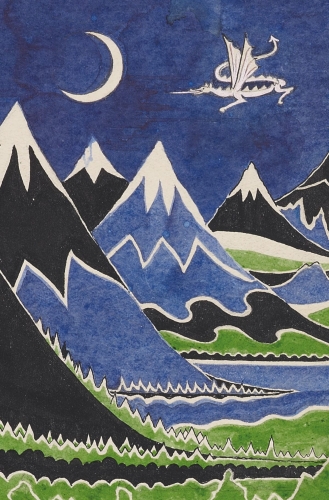
Just like the legends and stories of our ancestors, the myths of Middle Earth are meant to show us which spiritual qualities we should cultivate if we wish to live a noble life, while also cautioning us to be vigilant against corruption and malice that can appear not only around us but within our hearts and souls as well. Like in any mythology, these virtues, qualities, and truths are revealed to us through tales of heroic deeds, victories, defeats, and sacrifice. I believe Tolkien thought that the essential part of leading a noble and honest life is simply staying loyal to your family, friends, countrymen, community, and the traditional and cultural values of your folk. A noble spirit will fight for his own, accepting every responsibility that comes with it, for his main concern is not his personal well-being, but the well-being of his land and people. This is echoed in Frodo´s words to Sam towards the end of The Lord of the rings before he departs beyond the sea: “I tried to save the Shire, and it has been saved, but not for me. It must often be so, Sam, when things are in danger: someone has to give them up, lose them, so that others may keep them.”5
Gradually, I became aware of these underlying themes by rereading both The Hobbit and The Lord of the Rings, while also becoming acquainted with Tolkien’s other works, such as The Silmarillion and The Unfinished Tales. This made me appreciate the books even more, especially after I became racially conscious. After that, I came to view The Lord of the Rings, not just as a masterly crafted tale, but also as a positive inspiration for our own struggle, which I believe is in many ways similar to the struggle of the heroes in the book. In our times Sauron has returned as a force of globalization that we must fight against, and he has many Sarumans who are willing to help him, by importing hordes of Orcs and Uruks into our lands, trying to mix them with the native population of Europe, creating a population of “Half-orcs” and “Goblin-men”6, creatures of low intelligence that are easily manipulated and controlled.
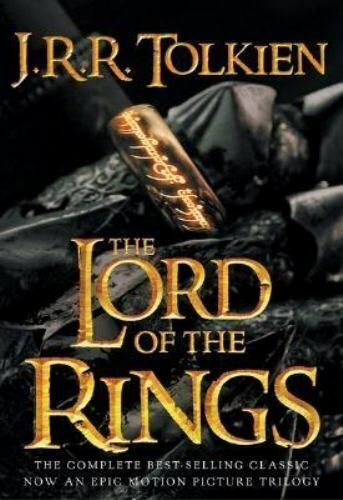
Another aspect of Tolkien’s views I came to appreciate was his criticism of industrialization that was responsible for the destruction of the countryside, expansion of urban areas, and pollution of nature. These views are reflected throughout his work. Although a devout Catholic, it seems that Tolkien did not completely share the general “man-centered” Christian outlook that the natural world exists only for the sake of humans, to be exploited and used by them as they see fit, thus having no other purpose than to serve humanity. This view which is partly rooted in Christianity has been adopted by the modern materialistic liberal societies of the West. But Tolkien’s comprehension of nature and the natural world was much deeper. He did not only see in nature´s creations raw materials or tools to be used by man but appreciated the beauty of untouched nature and recognized that the value of “other things” can be found in themselves. Replying to a letter of his publisher´s daughter in which she asked him about the “purpose of life”, he touched upon this subject: “As for other things` their value resides in themselves: they ARE, they would exist even if we did not. But since we do exist one of their functions is to be contemplated by us.”7 The natural world should be contemplated upon, and respected by man, not just used and exploited by him for his gains. This is a view shared by many on the Right, who believe that we should be guardians of nature, instead of trying to be its masters.
The One Ring represents absolute power and mastery over the world. It has the power not only to enslave and control all the peoples of Middle Earth but also to “command” nature. This becomes evident in the words of Elf Galdor when he says that “Sauron can torture and destroy the very hills”.8 The power of the ring can bend every living thing to its will, and shape every natural object as it sees fit. This absolute power and subjugation of all the peoples of the world is also the deepest hidden desire of the liberal “progressive” modern man. It can be seen in his attempts to create one global culture by forcing his “progressive” liberal ideas down the throat of every nation on the planet. It can also be seen in his belief that he can bend nature and its rules to his will, declaring that natural traits such as race or gender are just “social constructs” which he can alter. He cares only for himself, exploiting and using nature as well as all other creatures for his own gain. He has been corrupted by the modern ideas of cosmopolitanism, liberalism, and other “man-centered” creeds. He has gained too much power through technological advancement, which has corrupted and enslaved him, making him dependent upon his own inventions, gadgets, and machines. But most of all he is unknowingly enslaved by the current globalist elites sitting in their own dark towers, whispering to him, tempting him, and thus influencing and controlling him just as Sauron controlled the Nazgul. However, instead of the nine magic rings, the Sauron-like elites of our era are using the mass media and entertainment industry to ensnare him and make him impose their will unknowingly. Modern man may believe that he is the master of the world, but in fact, he is only a puppet in the hands of the hidden forces and the elites controlling him and all his actions. His technological and scientific progress is unrestrained by a healthy respect for nature or by an awareness that there are laws stronger than those he himself has written, that he must obey if he wishes to achieve real progress. Instead, his “progress” is led only by his lust for mastery over nature, greed, and material wealth. He was not ready for the power that he discovered, being led astray by his selfishness, rather than following the moral and spiritual virtues of his ancestors. Instead of building a new world based on both natural laws, old traditions, and new technology – an “archeofuturistic” world – he is creating hell on earth, lighting up the fires of the industry that are polluting and devouring his own home.
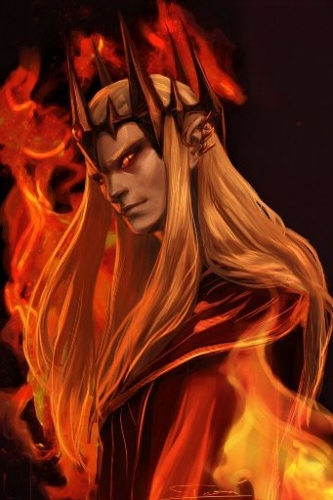
Technology is much like the magical rings, which were not forged by Sauron, but by the elven blacksmiths of the Second Age. We must remember that only the One Ring was made by the Dark Lord and was thus purely evil. Its main function was to control the other rings, subjugating their bearers, usually mighty kings or lords, to Sauron´s will, making them his puppets, so that he could enslave all of the “Free Peoples of the Middle Earth” with their assistance. Sounds familiar, doesn’t it?
The other rings of power were not evil in themselves. The three elven rings symbolizing air, water, and fire, were never touched or controlled by Sauron and were used to “ward off the decays of time and to postpone the weariness of the world.”9 In other words, the main powers of the three rings were used for the preservation of the elvish lands, for their enhancement, and had the power of healing. However, the rest of the rings were seized by Sauron and given to the chieftains of Men and to the Dwarven lords. The seven rings of the Dwarves were used for the accumulation of wealth, while the nine rings given to Men were used to gain power and help them became “mighty in their day, kings sorcerers and warriors of old” as well as to obtain “glory and great wealth.”10 The Dwarves proved resilient to Sauron’s attempts to enslave their will, but the rings awoke an excessive thirst for material wealth in their hearts and their greed caused division and quarrel among them. On the other hand, the human bearers of the nine rings quickly came under the influence of Sauron, eventually falling under the complete control of his will, their downfall being their lust for power and wealth.
Just as modern science and technology can be used for different purposes so can the rings of power. The elven rings, whose main purpose was to heal and enhance, share some of the positive aspects of modern science and technology such as curing diseases, improving the standard of living, and so on. Obtaining wealth is also good, as long as it doesn’t become the main preoccupation, but is restrained by moral values and an awareness that spiritual qualities are often more important than physical possessions. Unfortunately, modern science and technology are too often concerned only with “accumulation of wealth” or in other words solely with profit, as their “bearers” were ensnared by the big corporations and the modern globalist elites who are, just like Sauron, concerned only with gaining more power and control over this Earth.
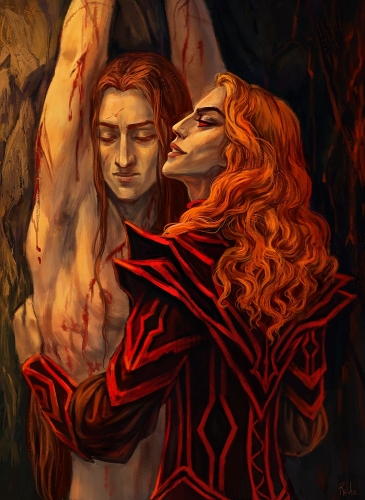
There is one Tolkien character that especially resembles the main advocates and representatives of the modern world, such as liberal politicians, mainstream media demagogues, and those who are working for the advancement of the big money-thirsty corporations. This “embodiment” of modernity in Middle Earth is Saruman the White. He was the chief of the five wizards sent to aid the peoples of Middle Earth against the rising threat of Sauron. However, by studying the lore of the rings of power, he became obsessed with gaining such power as was concealed in the One Ring. This lust for power has led him into treachery, abandoning his original mission, and joining the Dark Lord in hope that he could come into possession of the ring. His actions are much the same as those of our liberal politicians and leaders. They too have forgotten their true duties such as protecting and guarding their peoples. They have neglected the well-being and prosperity of their nations and are instead pursuing their personal interests in acquiring power and wealth. Furthermore, they are serving the globalist elites, by doing their dirty deeds and selling out their own folk just to satisfy their thirst for power and profit. Saruman was the master of persuasion, his most powerful weapon being his voice. In this regard, he is not similar only to the sweet-talking, lying politicians, but especially to the mass media demagogues who are spewing lies, distorting the facts, and trying to convince us that we should accept liberal “progress” and multiculturalism. It should be noticed that when Saruman became a servant of Sauron, he renounced his old title of Saruman the White and became Saruman of Many Colors. Lastly, Saruman was an industrialist, having a “mind of metal and wheels” and not caring for “for growing things, except as far as they serve him for the moment.”11 Saruman has clearly adopted a typical modernist “man-centered” outlook. He was destroying nature, cutting down trees to fuel the ovens of his workshops, while at the same time breeding together different races of Goblins, Orcs, and Men, creating a new type of creatures to fill the ranks of his army. A true adherent of diversity and bringer of “progress” to the traditional, ethnopluralist Middle Earth.
Tolkien’s works, drawing inspiration from the history of Europe and her myths, languages, cultures, and peoples while at the same time dealing with the themes such as honor, courage, and sacrifice, represent an important source of inspiration for all Europeans, and especially for those of us who are actively engaged in a struggle for the survival of our people. There are many servants of the dark powers today teaching falsehoods in our schools and universities, occupying positions of power, and controlling the mass media in our societies. But fortunately, we still have among us those who are ready to fight for their peoples, a small company of Men of the West, facing vast armies of Mordor and Isengard. And although our current battle is more likely to involve quills rather than swords, it is just as important for us as the War of the Ring was for Frodo or Aragorn because just like them, we are fighting for the very existence of our peoples and the future of the West.
1 J.R.R. Tolkien, The Return of the King, The Lord of the Rings part 3 (London: HarperCollins Publishers, 2005), p. 1031
2 The Letters of J.R.R. Tolkien, ed. Humphrey Carpenter with the assistance of Christopher Tolkien (London: HarperCollins Publishers, 1995), p. 249
5 J.R.R. Tolkien, The Return of the King, The Lord of the Rings part 3 (London: HarperCollins Publishers, 2005), p. 1029
6 Goblin-men and Half-orcs were creatures bred by Saruman. See J.R.R. Tolkien, The Two Towers, The Lord of the Rings part 2 (London: HarperCollins Publishers, 2005), p. 536
7 Joseph Pierce, Tolkien: Man and Myth ( London: HarperCollins Publishers, 1998), p. 210
8 J.R.R. Tolkien, The Fellowship of the Ring, The Lord of the Rings part 1 (London: HarperCollins Publishers, 2005), p. 266
9 J.R.R. Tolkien, The Silmarillion, ed. Christopher Tolkien ( London: HarperCollins Publishers, 2013), p. 345
11 J.R.R. Tolkien, The Two Towers, The Lord of the rings part 1 (London: HarperCollins Publishers, 2005), p. 616



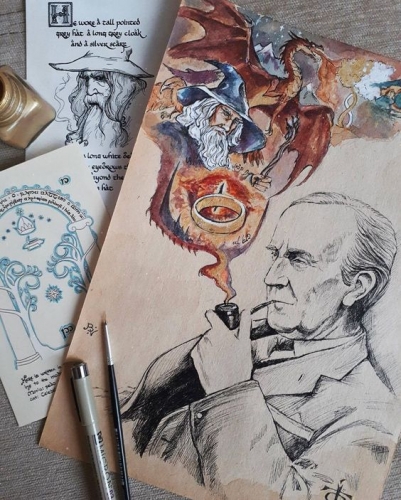

 del.icio.us
del.icio.us
 Digg
Digg
Les commentaires sont fermés.